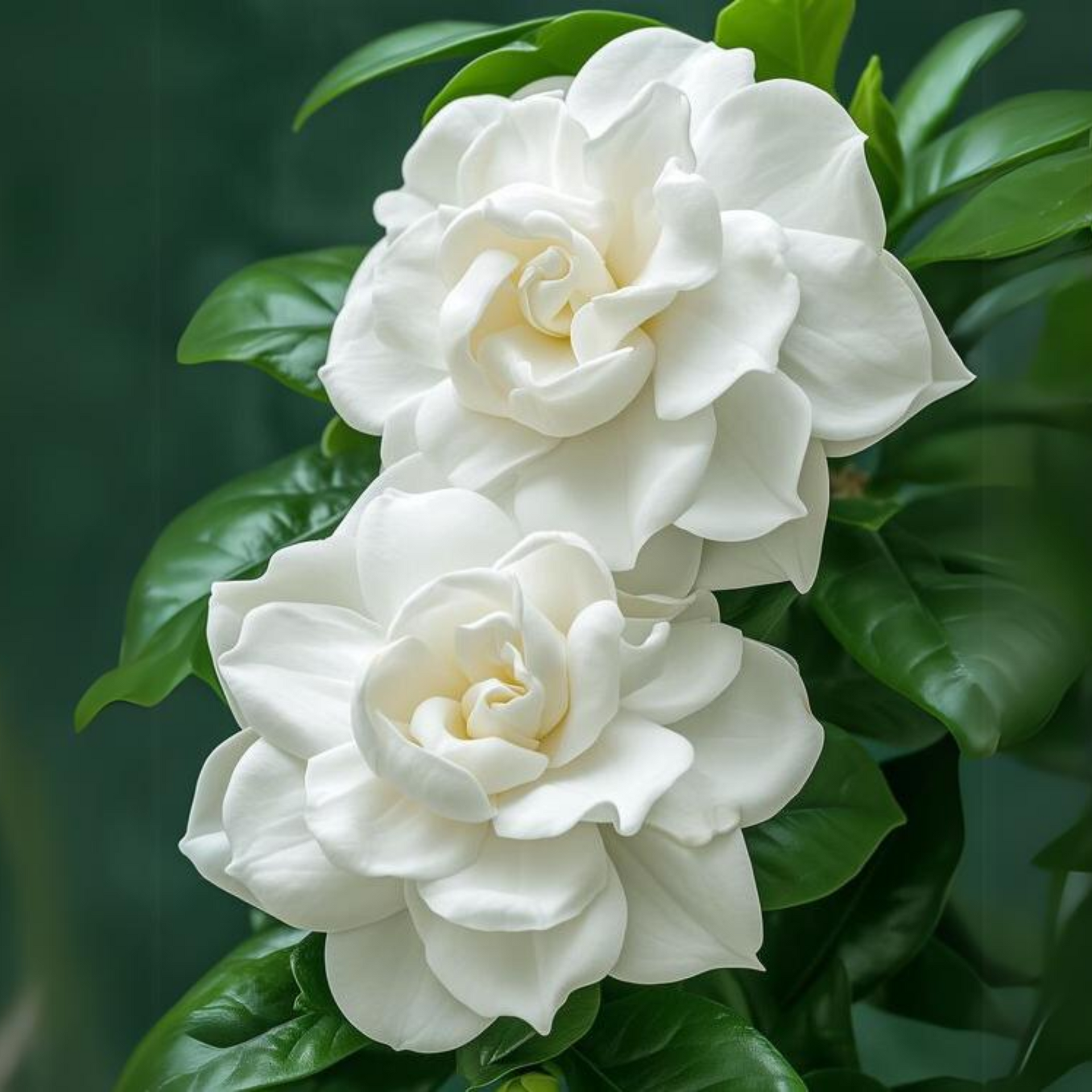
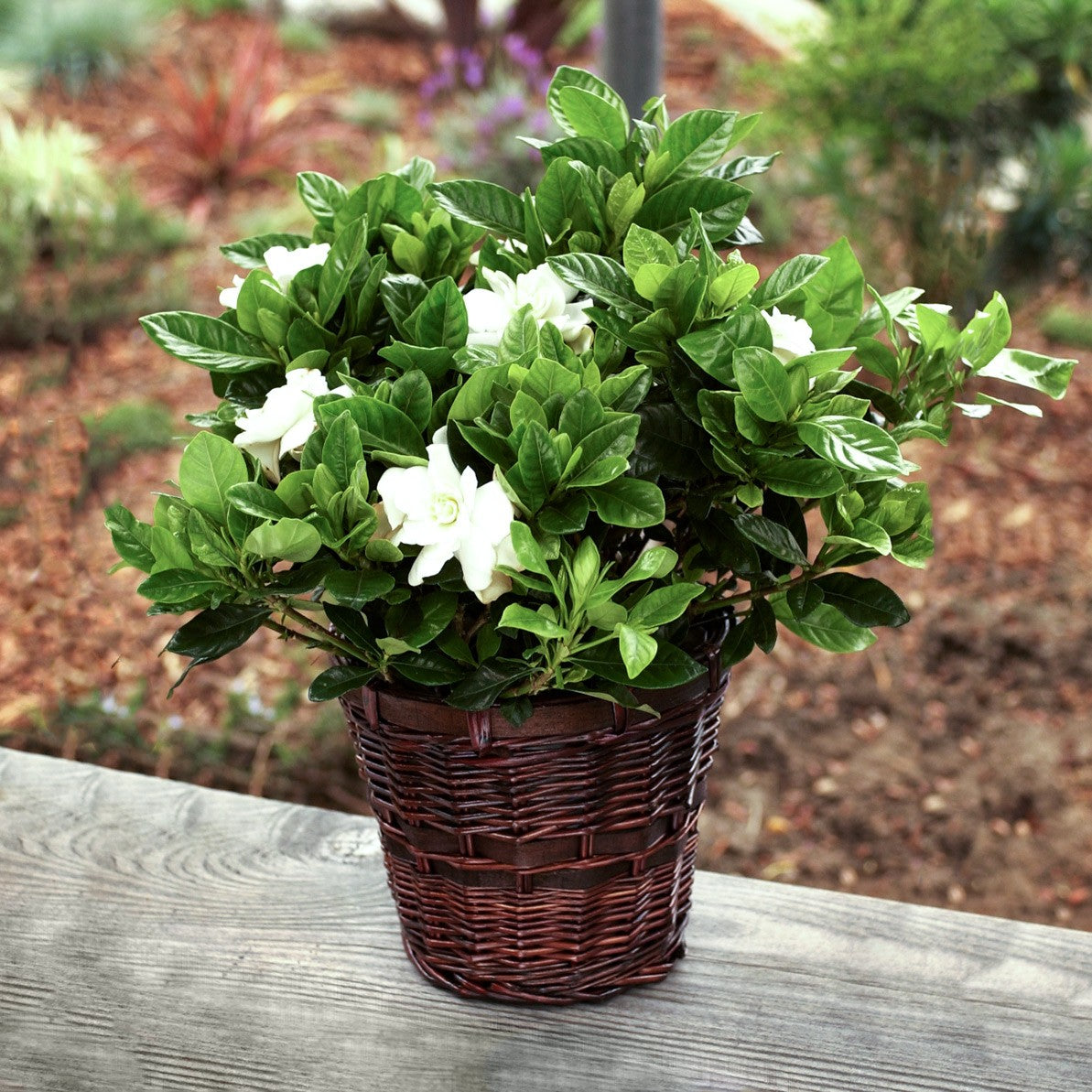
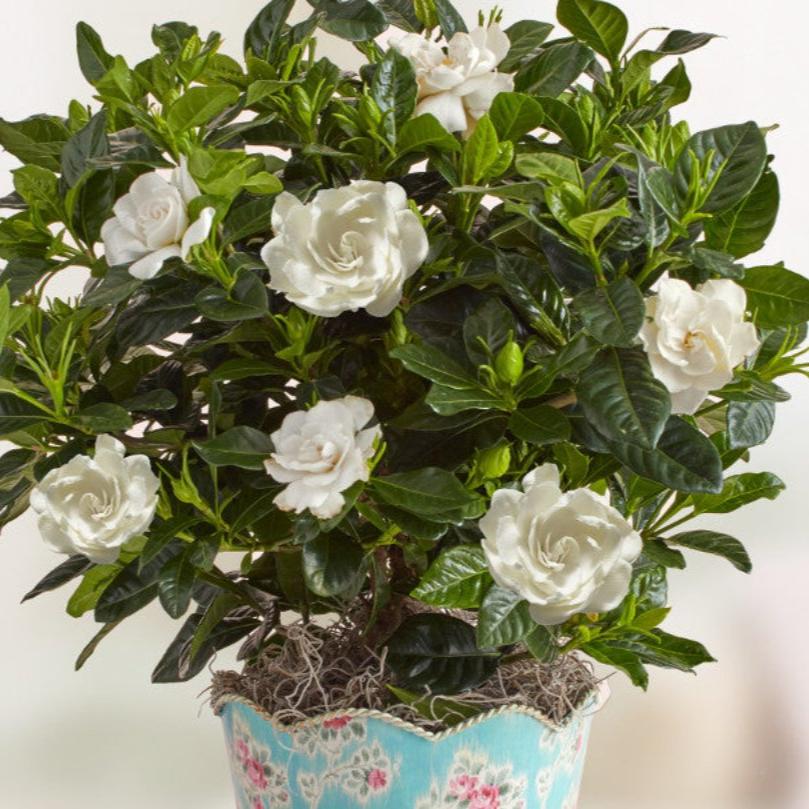
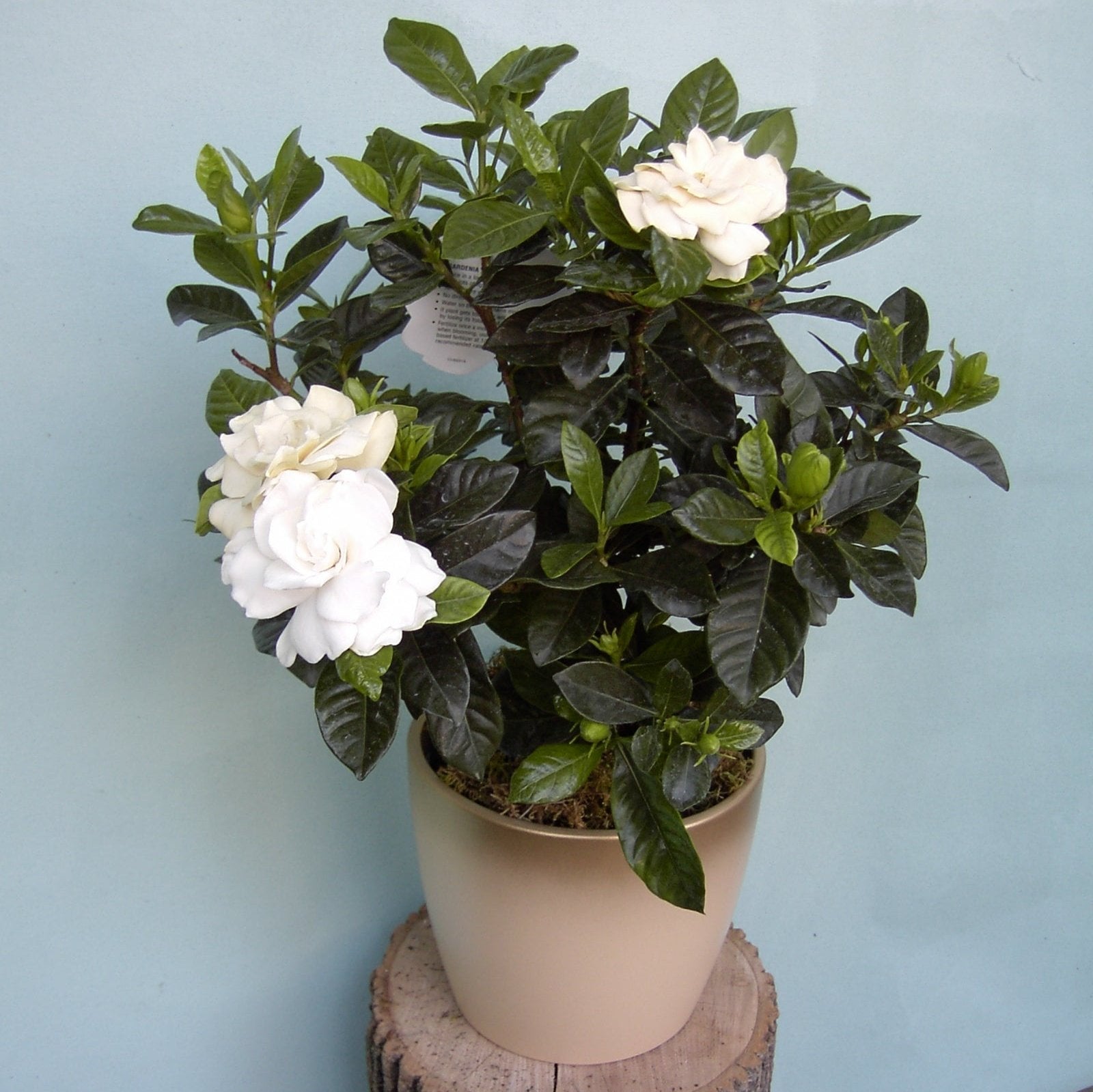
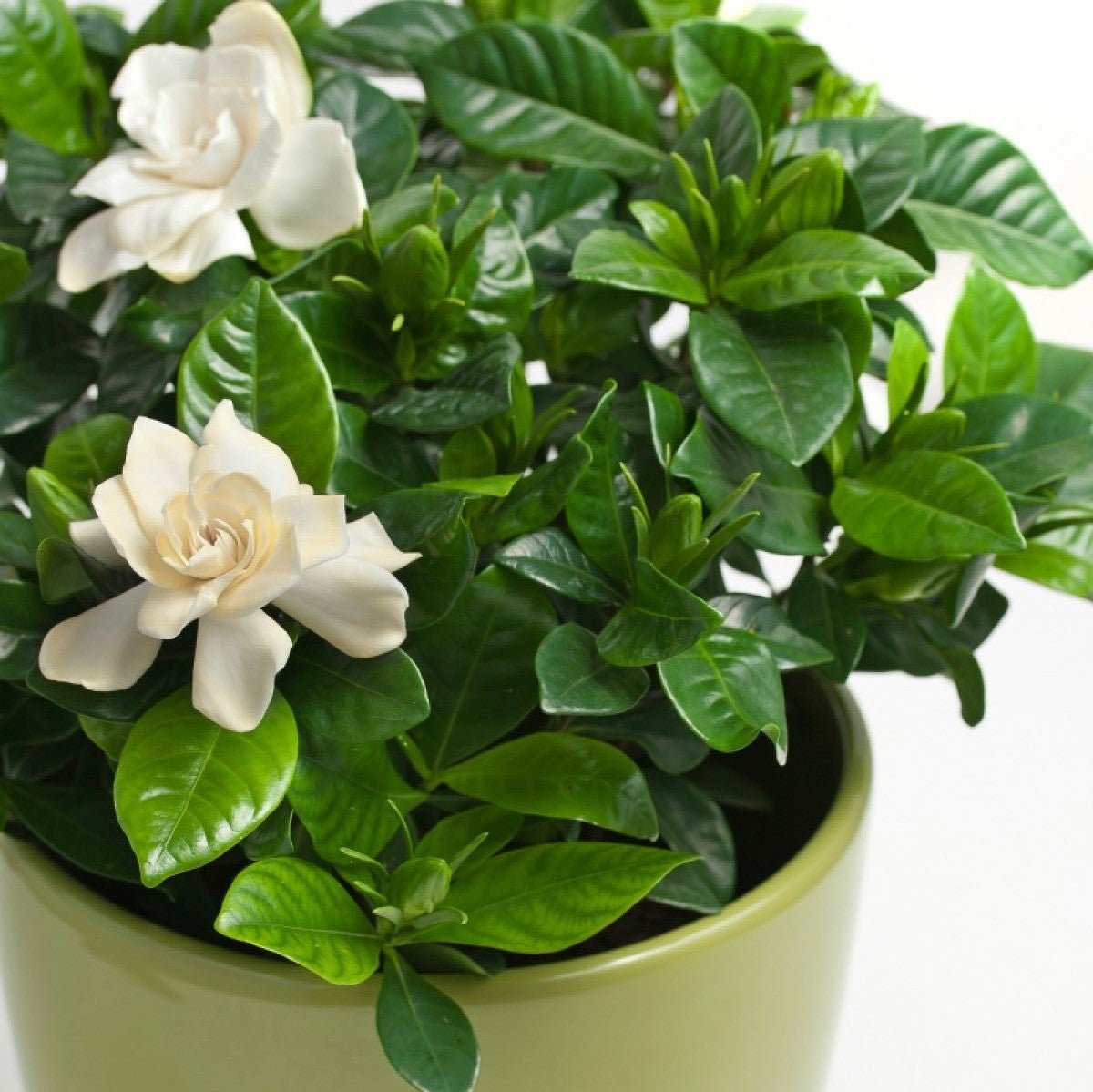
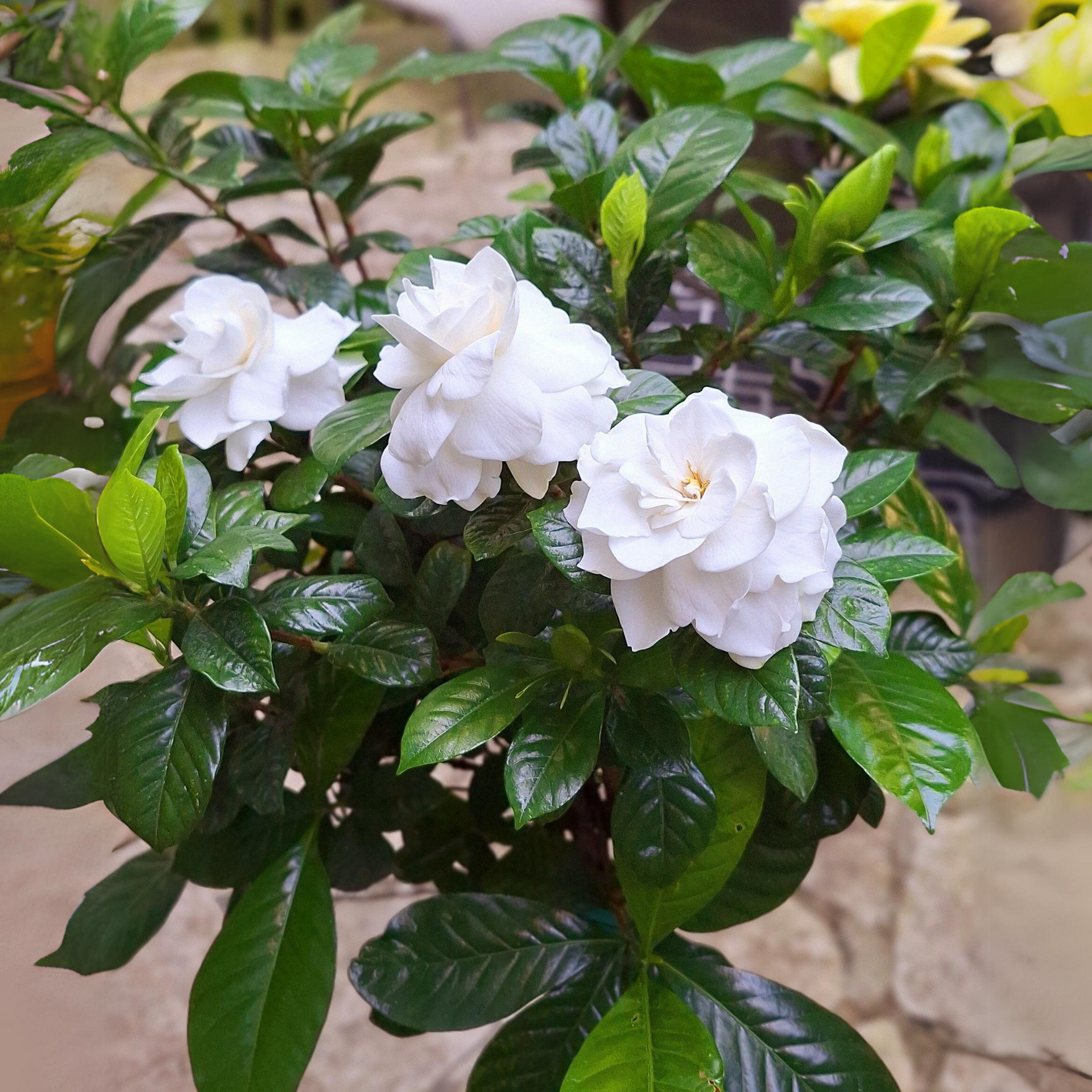
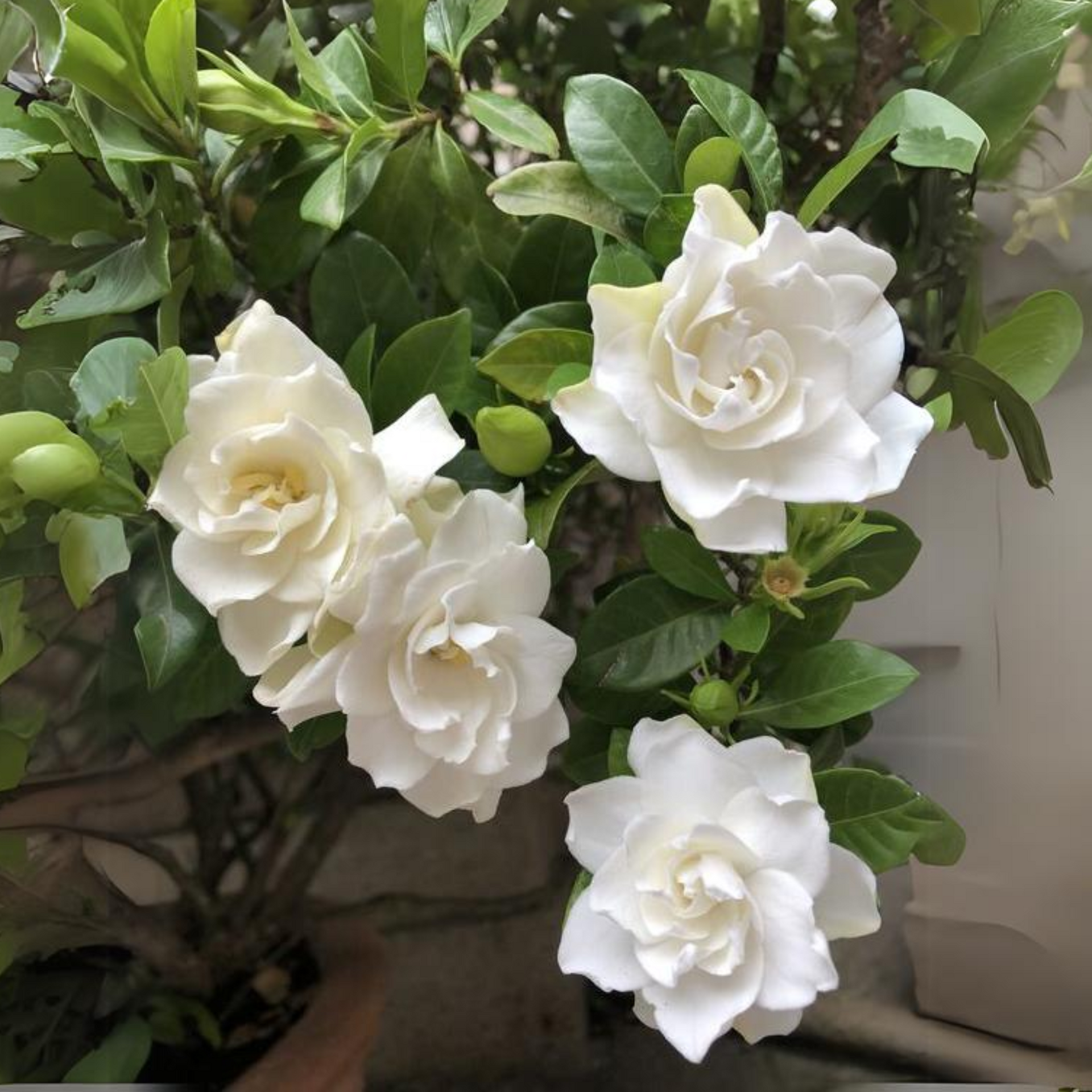
Unveiling the Enchanting Beauty of the
Gardenia Flowering Plant
About Gardenia Flowering Plant
In the world of flora, few plants possess the ethereal charm and captivating fragrance quite like the Gardenia flowering plant. Revered for its exquisite blossoms and intoxicating scent, the Gardenia plant has carved a special place in the hearts of gardeners, horticulturists, and flower enthusiasts alike. Let's take a journey into the world of this enchanting plant, exploring its origins, characteristics, care requirements, and the cultural significance it holds.
A Fragrant Prelude: Origins and Varieties
- The Gardenia, belonging to the Rubiaceae family, is native to the tropical and subtropical regions of Africa, Asia, and the Pacific Islands.
- Renowned for its elegant, creamy-white blossoms and a fragrance that rivals even the most luxurious perfumes, Gardenia plants have become cherished additions to gardens, landscapes, and even indoor spaces.
- Within the Gardenia genus, there are more than 200 different species and cultivars, each with its own unique characteristics.
- Some of the most popular varieties include Gardenia jasminoides, Gardenia thunbergia, and Gardenia radicans.
- These variations offer a range of flower sizes, leaf shapes, and growth habits, making them versatile options for various planting scenarios.
The Elegance of Blossoms and Fragrance
- The centerpiece of the Gardenia's allure is undoubtedly its blossoms.
- The velvety white petals unfurl in delicate spirals, revealing a central whirl of golden stamens.
- The flower's contrasting dark green foliage provides a striking backdrop that accentuates the purity of the blooms.
- But what truly sets the Gardenia apart is its intoxicating fragrance.
- The sweet, heady aroma has the power to transport anyone to a serene garden oasis.
- This fragrance isn't just a treat for humans; it also attracts pollinators such as moths during the night, giving the Gardenia an ecological purpose beyond its aesthetic value.
Caring for Captivating Beauty
While the Gardenia's beauty is mesmerizing, its care demands can be quite specific. Proper care ensures that this plant thrives and rewards its cultivators with an abundance of blossoms.
Light:
Gardenias thrive in bright, indirect light. They prefer morning sunlight and filtered afternoon light, making them ideal candidates for east or west-facing windows.
Soil:
Well-draining, slightly acidic soil is essential. A mix of peat moss and perlite can help achieve the right soil consistency.
Watering:
Gardenias like consistently moist soil. Avoid overwatering, as soggy roots can lead to root rot. The soil can retain moisture by being mulched.
Humidity:
These plants adore high humidity levels. Regular misting or placing a tray of water near the plant can create the required humidity.
Temperature:
Gardenias prefer warmer temperatures but should be protected from extreme heat. They thrive in temperatures between 65-70°F (18-21°C).
Pruning:
Regular pruning after flowering helps maintain the desired shape and encourages new growth.
Cultural Symbolism and Significance
- Beyond their visual and olfactory appeal, Gardenias hold cultural significance in various societies.
- In some cultures, they symbolize purity, love, and renewal.
- Gardenias have been used in traditional medicine for their potential healing properties, such as in aromatherapy to alleviate stress and anxiety.
Growing Gardenia Flowering Plants: A Fragrant
Delight in Your Garden
Gardenias are renowned for their exquisite beauty and captivating fragrance. Cultivating these flowering plants can add a touch of elegance and allure to any garden. However, the journey to successfully grow and nurture gardenias requires a blend of patience, care, and a bit of horticultural know-how. In this article, we'll delve into the art of growing gardenia flowering plants, sharing insights that will help you cultivate these botanical gems with confidence.
Choosing the Right Variety
- Selecting the appropriate variety of gardenia is crucial to ensure successful growth.
- Common gardenia varieties include Gardenia jasminoides and Gardenia thunbergia.
- Consider the climate in your region and the specific needs of each variety before making a choice.
- Some varieties are more cold-hardy, while others thrive in warmer conditions.
Ideal Growing Conditions
- Gardenias flourish in specific environmental conditions.
- They prefer well-draining, acidic soil rich in organic matter.
- A location with partial shade is optimal – too much direct sunlight can scorch their delicate leaves, while insufficient light might hamper flowering.
- The right balance is key.
Planting Process
- When planting gardenia flowering plants, ensure the hole is twice as wide as the root ball but not deeper.
- Gently loosen the roots before placing the factory in the hole.
- Backfill with soil and press down firmly.
- Remember to water thoroughly after planting to eliminate air pockets around the roots.
Watering Routine
- Consistent watering is vital for gardenias.
- They like to be kept constantly wettish but not doused.
- During the growing season, water deeply at least once a week, adjusting frequency based on weather conditions.
- Mulching around the base of the factory helps retain soil humidity and suppress weeds.
Fertilization
- Proper fertilization encourages healthy growth and abundant flowering.
- Use a balanced, slow- release toxin formulated for acid- loving shops.
- Apply in spring and again in late summer following the manufacturer's guidelines.
- Over-fertilization can lead to excessive foliage growth at the expense of flowers, so moderation is key.
Pruning Practices
- Pruning is essential for maintaining the shape of the gardenia plant and promoting new growth.
- Prune after the main flowering period, usually in late summer.
- Remove dead or diseased branches and spent flowers to encourage the development of new buds.
Pest and Disease Management
- Gardenias are susceptible to pests such as aphids, whiteflies, and scale insects.
- Regularly check your shops for any signs of infestation and take applicable measures similar as using insecticidal cleaner or neem oil painting.
- Proper distance between shops can also help minimize pest problems.
Winter Care
- For gardenias in colder climates, winter protection is crucial.
- Applying a thick layer of mulch around the base of the plant helps insulate the roots from extreme temperatures.
- If growing in pots, consider moving them indoors or to a sheltered area during the winter months.




